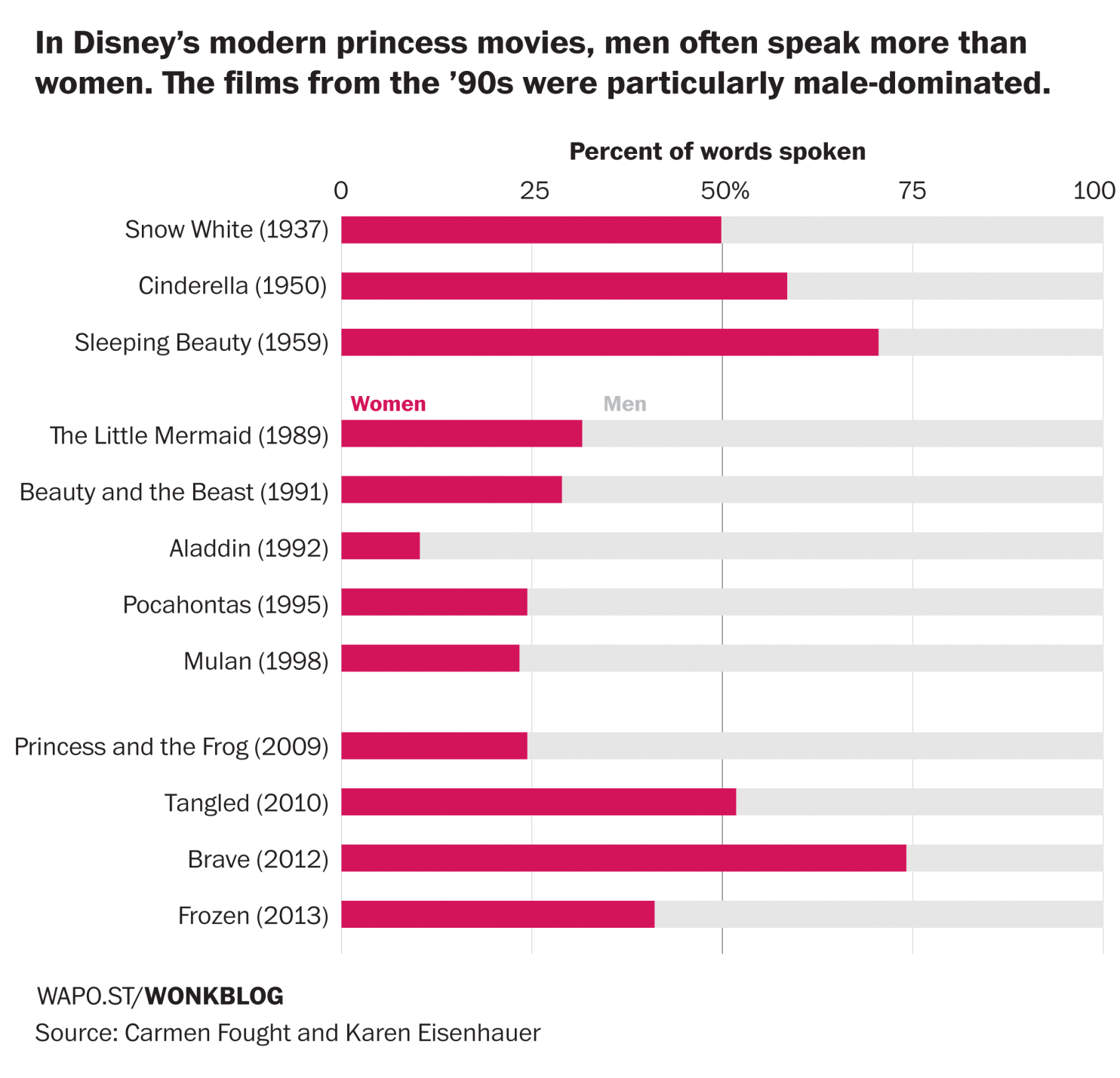How Children's Books Teach An Unsettling Lesson in Discrimination

By:
Many people learn their first lessons from children's stories such as "Winnie the Pooh" and "The Tale of Peter Rabbit." Now, research suggests that these books aren't so innocuous; new studies on children's literature have identified disturbing trends in the messages popular books convey about gender and race.
Children's books teach sexism.
A 2011 study conducted at Florida State University looked at about 6,000 children's books published between 1900 and 2000 and found some alarmingly sexist trends, according to the Telegraph.
The books featured almost twice the number of male protagonists as female ones, and male characters were twice as likely to be named in the books' titles than female characters, the study found.
The gender divide in books with animal characters was even more dramatic. In these books, there were three times as many male main characters as female ones.
"Together with research on reader interpretations, our findings regarding imbalanced representations among animal characters suggests that these characters could be particularly powerful, and potentially overlooked, conduits for gendered messages," lead researcher Janice McCabe told the Telegraph.
"The persistent pattern of disparity among animal characters may reveal a subtle kind of symbolic annihilation of women disguised through animal imagery," McCabe added.
Female characters are also often less three-dimensional than male ones, Soraya Chemaly argued in The Huffington Post. "Female characters in books that are for 'everyone' are often marginalized, stereotyped or one-dimensional," Chemaly wrote. "Especially in traditional favorites that are commonly highlighted in schools and libraries. For example, 'Peter Pan''s Wendy is a stick-in-the-mud mother figure, and Tiger Lily is a jealous exotic."
The Florida State study also found that children's books' gender bias worsened in the second half of the 20th century.
"One thing that surprised us is that females' representations did not consistently improve from 1900 to 2000," McCabe said, according to the Telegraph.
Diversity is lacking in children's literature
Researchers have also looked into how race is characterized in children's books. A 2012 survey conducted by the Cooperative Children's Book Center at the University of Wisconsin-Madison School of Education looked at 3,600 children's books from that year. Among the survey's findings:
• Only 119 books had significant African or African-American content
• Only 68 books were by Black authors and/or illustrators
• Only 22 books had American Indian themes, topics, or characters
• Only 6 books were by American Indian authors and/or illustrators
• Only 76 books had significant Asian/Pacific or Asian/Pacific-American content
• Only 83 books were by authors and/or illustrators of Asian/Pacific heritage
• Only 54 books had significant Latino content
• Only 59 books were by Latino authors and/or illustrators
There is some good news: Books became drastically less whitewashed between 2014 and 2015, more recent CCBC surveys found.
“The number of books with significant African or African-American content increased by almost 50 percent, from 180 in 2014 to 261 in 2015," the CCBC found. "The number of books by Black authors and/or illustrators made a more modest climb, from 84 in 2014 to 100 in 2015."
There was also a modest increase in the number of books with Latino characters, from 66 to 82, and the number of books by authors of Asian/Pacific heritage rose from 129 in 2014 to 173 in 2015.
Still, some groups and authors remained underrepresented. There was no change from 2014 to 2015 in the number of books by Latino authors and illustrators, or the number featuring Asian/Pacific American or Native American content, or by indigenous authors and illustrators, the research found.
"We are a storytelling species, and symbolic representation and visibility are crucially important to the way we structure society," Chemaly wrote in The Huffington Post. "Exposing children to diversity in media encourages them to learn about people who are 'different' and to understand why that difference isn't the foundation of hierarchy, but community."
We need more diverse media
ATTN: previously reported about 11-year-old Marley Dias , who observed that her school curriculum featured books primarily about "white boys and dogs." She started a project to compile a library of books with Black female protagonists, and her #1000BlackGirlBooks project earned her a grant and TV coverage on Fox 29.
Books shape kids' ideas about relationships, gender, and identity, and so do stories in other media, such as television and film.
In those media, Disney has made a mark with its movies about princesses. But in the five princess films released after 1989's "The Little Mermaid," male characters had three times as many lines as their female counterparts, linguists Carmen Fought and Karen Eisenhauer found, according to WonkBlog.
 Wonkblog/Washington Post - washingtonpost.com
Wonkblog/Washington Post - washingtonpost.com
Attempts to make classic stories more diverse often face major backlash. When the new "Star Wars" movie, "The Force Awakens," featured a woman, a Black man, and a Latino character in lead roles, some fans expressed outrage and tweeted the hashtag #BoycottStarWarsVII.
When a rumor surfaced that Idris Elba was being considered for the part of James Bond, author Anthony Horowitz, who was hired to write a 007 book sequel, told the Daily Mail that Elba was "a bit too 'street' for Bond." Horowitz insisted, "It’s not a color issue," but his comment was widely interpreted as a racist jab.
Horowitz eventually apologized for his statements, according to Variety. For his part, Elba responded on Instagram, screen-grabbing the article and writing, “Always keep smiling!! It takes no energy and never hurts! Learned that from the Street!! #septemberstillloveyou.”
You can learn more about diversity in media on the CCBC and in the Geena Davis Institute on Gender and Media.
